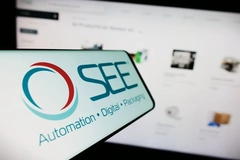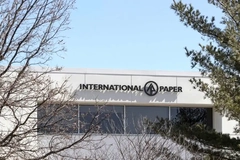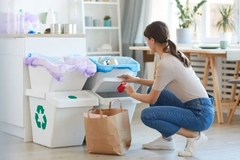Get the bottles back: AB InBev director discusses reuse scalability ahead of Rethinking Materials

28 Apr 2022 --- Ahead of the Rethinking Materials event next week in London, UK, we sit down with Maisie Devine, executive director for sustainable innovation and 100+ Accelerator at AB InBev, to discuss the scalability potential of reusable and refillable beverage packaging solutions.
Devine will host a roundtable discussion on how to scale return, reuse and refill systems on day one of the show (May 4). She will argue that businesses need to establish more standardized packaging and a framework to ensure bottles are actually returned to make reuse models viable in developed markets.
In this interview with PackagingInsights, Devine explains how reusable or refillable packaging models are environmentally superior to single-use systems but why investing in refillable systems that are unfamiliar to consumers can be challenging. She also spotlights some of AB InBev’s latest returnable or refillable solutions, including its in-home draft machine for beer and reusable cups for events.
Why are refill models still generally small-scale operations and mostly limited to trials?
Devine: So when you look at the full world picture, refillable models are quite common and in fact 36.4% of our international volume is in returnable or refillable bottles. But I believe your question is really looking at countries where refillable systems don’t already exist or haven't existed for some time like the UK or the US – why are refillable models in those countries still small-scale operations or limited to trials or pilots? And the reason is – it’s very capital-intensive to set up refillable or returnable systems particularly when there is not a logistics system in place to get those bottles back into our supply chain and when the consumer behavior doesn’t exist to refill or reuse bottles – like it does in say Brazil, Colombia or South Africa. Beer has been served in refillable barrels since the Middle Ages, and kegs remain a popular option.
Beer has been served in refillable barrels since the Middle Ages, and kegs remain a popular option.
So what companies are trying to do right now is to figure out the most efficient ways to get to a viable model because the long-term viability of a refillable system is dependent on massive scale. For example, they are trying to determine what are those logistics systems that need to be in place, what are the most efficient, effective ways to set them up, how do we incentivize and engage consumers in the right way to participate in a refillable system, what are the overall investments required in infrastructure, bottle washing, inspection, quality assurance? Once we can answer those questions, it will be much easier for us to make the investment to scale refillable models in those markets.
In addition to refillable solutions, we are also very focused on increasing recycled content in our packaging. Today in Western Europe, our packaging has achieved 63.5% recycled content and we are working to get that level even higher.
What ideas will you put forward at Rethinking Materials to help scale refill or reusable solutions?
Devine: It’s not a revolutionary idea, but to reintroduce returnable or refillable systems in developed markets, we need a patchwork framework of getting the bottles back and that’s through consumer returns, retailer participation, on-trade engagement and post-consumer collection in partnership with waste collection and MRFs. We also need to have a conversation about standardization of packaging across different brands and SKUs. It will be a lot easier to have a refillable or returnable system if packaging is more standardized.  A challenge with keeping reusable event cups in circulation is that consumers like to take them home as souvenirs.
A challenge with keeping reusable event cups in circulation is that consumers like to take them home as souvenirs.
What sort of refill or reusable packaging solutions does AB InBev currently offer and/or have in development?
Devine: We have a returnable or refillable solution in every market where we operate, whether that is bottles or kegs. Since the Middle Ages, beer has been served in refillable barrels and, to this day, kegs continue to be the most sustainable form of packaging. On the single-serving side, we are currently doing a pilot with Again – a UK-based startup that is setting up a distributed, efficient, and cost-effective cleaning pod for refillable systems.
We have also done pilots in the US to test consumer behavior and incentives to return. Another option for consumers at home is our Perfect Draft solution – a small in-home draft machine that uses a 6-liter returnable keg. Perfect Draft is growing very nicely in the UK market as consumers opt for draft beer in the comfort of their lounge.
We’re also looking at refill solutions at events with reusable cups. There are two ways of approaching this, either collecting and washing the cups at the event itself, or afterwards. However, one challenge for this solution is keeping the cups in circulation as consumers often tend to take them home as a souvenir. Reuse models are more familiar to consumers in Brazil, Colombia and South Africa than the Western world.
Reuse models are more familiar to consumers in Brazil, Colombia and South Africa than the Western world.
What are the challenges associated with scaling refill systems without a complete understanding of how consumers might respond to them?
Devine: The biggest concern or challenge is to invest to set-up a refillable system that no one uses. Returnable packaging is more durable on purpose to survive multiple trips into the market. The worst thing would be to switch to a returnable bottle that people are then throwing in the bin – one that is more expensive and more resource intensive to create.
On the COVID front, we were initially worried about movement away from refillables or returnables, but consumers are beginning to return to normal routines and if you are transparent about strict QA and cleanliness standards, consumers are fine with refillables or returnables.
To what extent are reusable models more sustainable than single-use models in terms of overall environmental impact?
Devine: Hands down, returnable bottles are more environmentally-friendly than one-ways. The returnable glass bottle produces eight times less emissions than a one-way glass bottle. Kegs are the best overall, but for single-use packaging, returnable glass is the best. These statistics are based on average reuse cycles, so the better we take care of our returnable glass and the more cycles it can run, the higher the positive environmental impact. We track all these metrics very carefully as decreasing emissions in packaging can have a huge impact on our path to net zero emissions by 2040.
By Joshua Poole











